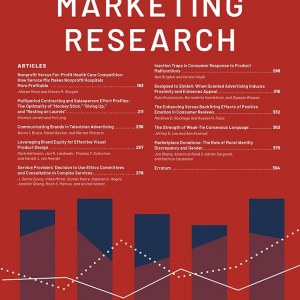
Yang, C., Toubia, O. and de Jong, M. (2018). Attention, Information Processing and Choice in Incentive-Aligned Choice Experiments Journal of Marketing Research, 55(6):783--800.
-
Affiliated author
-
Publication year2018
-
JournalJournal of Marketing Research
In incentive-aligned choice experiments, each decision is realized with some probability prob. In three eye tracking experiments, we study the impact of varying prob from 0 (as in purely hypothetical choices) to 1 (as in real-life choices) on attention, information processing, and choice. Consistent with the bounded rationality literature, we find that as prob increases from 0 to 1, consumers process the choice-relevant information more carefully and more comprehensively. Consistent with the psychological distance literature, we find that as prob increases from 0 to 1, consumers become less novelty seeking and more price sensitive. These findings underscore that even with incentive alignment, preference measurement choice experiments such as choice-based conjoint analysis (CBC) only represent an approximation of real-life choices. While it is not feasible to systematically use questions with high prob in the field, we predict and find that placing a higher probability question (such as an external validity task) at the beginning rather than the end of a questionnaire has a carryover effect on attention and information processing throughout the questionnaire, and impacts preference estimates.